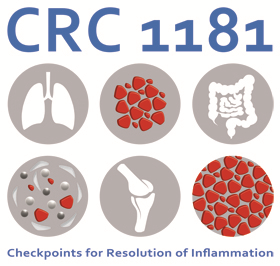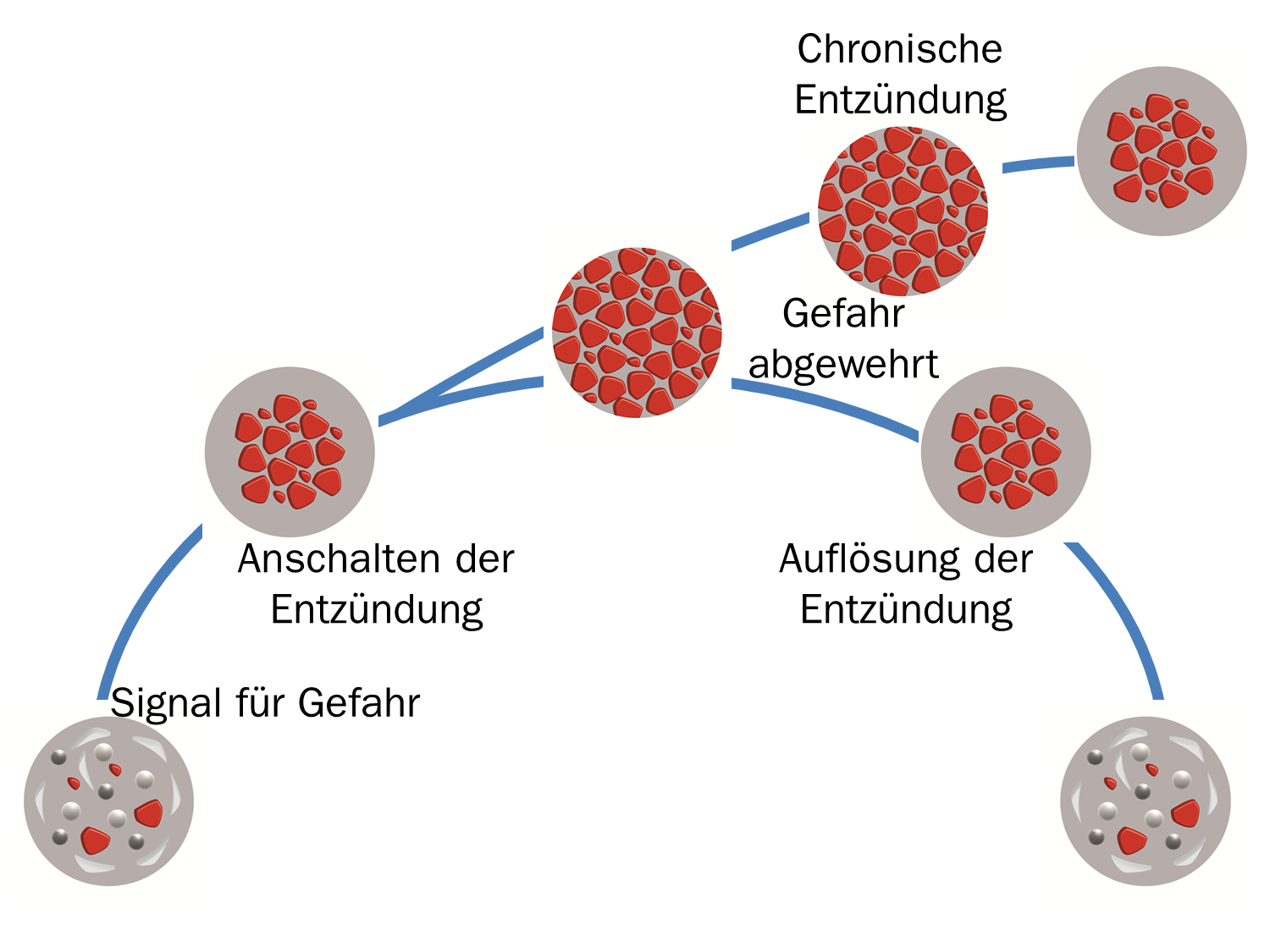Resolution of chronic inflammatory disease: universal and tissue-specific concepts
Resolution of chronic inflammatory diseases
A new article from the CRC 1181 was recently published in Nature Communications, elaborating on aspects leading to the resolution of inflammation, what happens if this goes wrong and what this has in common with chronic inflammatory diseases.
Our body depends on a good, rapid, robust and adequate inflammatory response in order to ward off danger to the body (e.g. Bacteria, Viruses or injuries). Inflammation and its resolution is under-studied in medicine despite being essential for understanding the development of chronic inflammatory diseases. Prof. Dr. med. univ. Georg Schett (Director Clinic for Internal Medicine 3 – Rheumatology and Immunology) und Prof. Dr. med. Markus Neurath (Director Clinic for Internal Medicine 1 – Gastroenterology Pneumonology, Endokrinology) are investigating new concepts in the resolution of inflammation and translate those findings to diseases like Rheumatoid Arthritis, Asthma or Crohn’s disease. Understanding the interactions between results from different tissues like the joints, the gut or the lung could give rise to novel therapeutic targets or even the prevention of chronic inflammatory diseases.
Phases of Inflammation
Inflammatory responses have 3 phases: (1) The induction phase allows fast and robust activation of the immune response in order to defend our body against e.g. invaders. (2) The Inflammation reaches its peak phase, where most of immune and surrounding cells are recruited and activated to destroy the invader. (3) During the resolution phase, the inflammation is switched off, allowing the restoration of tissue homeostasis and healing, as soon as the danger signal is eliminated.
What happens, if the inflammatory response is not switched off?
During the resolution phase of inflammation a lot can go wrong. If the body would switch off the inflammatory response too early – this means our immune cells stop their work before the invader is killed – it is understandable, that the body would get in harms way. However, if the inflammatory response is not switched off, the inflammation keeps burning and damages the own body, even if the invader is warded off already. This leads to a chronic inflammation, that is not reacting to switch-off signals anymore or doesn’t even know these signals. The resulting damage, no matter in which tissue, can be enormous and give rise to chronic inflammatory diseases like Rheumatoid Arthritis, Crohn’s disease or Asthma. Furthermore, this damage at the inner surfaces of our body substantially increase the risk for the development of cardiovascular disease, cancer, and osteoporosis.
In this review article, Prof. Schett and Prof. Neurath are elaborating on different targets, that act as checkpoints for the resolution of inflammation. Differences and shared aspects of diseases, that look entirely different on the first glance, are compared. Possibilities on how to uilize these checkpoints in order to resolve overshooting or wrongfully ongoing inflammation are introduced, that could lead to the termination or prevention of chronic inflammatory diseases.
Manuscript:
https://www.nature.com/articles/s41467-018-05800-6
More information:
Prof. Dr. Georg Schett
Telefon 09131 85-39109
E-Mail: m3direktion@uk-erlangen.de

